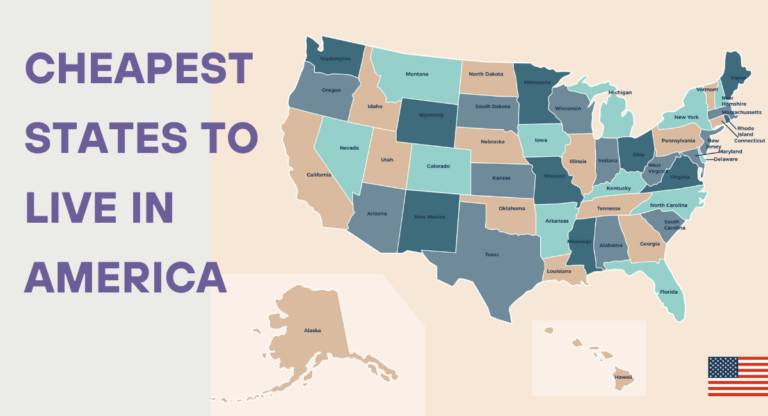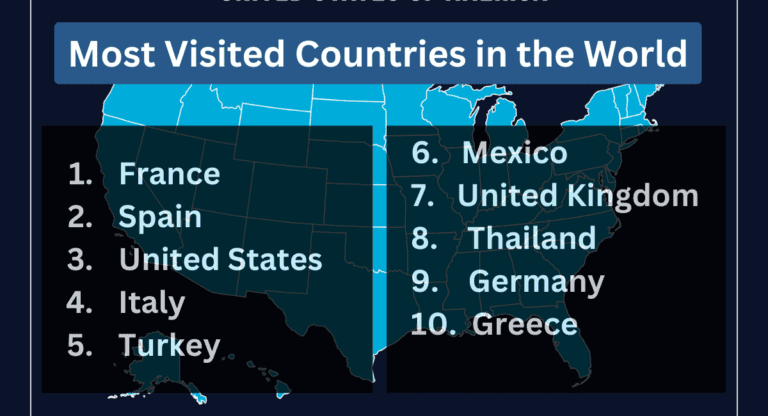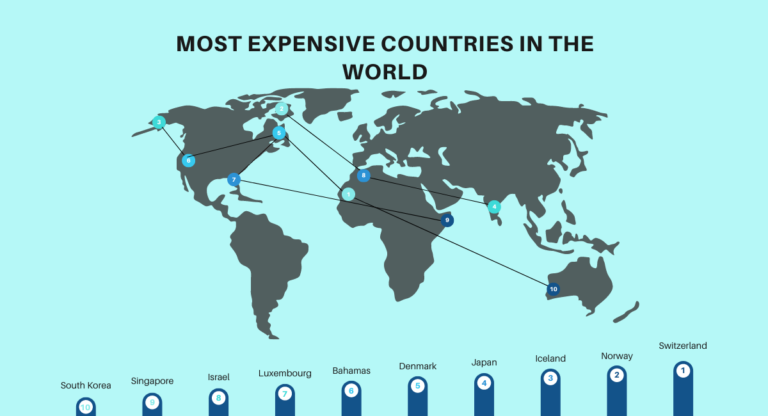Top 7 Biggest Banks in Canada in 2024
Canada is renowned as a stable country around the world, with the safest financial sectors ensuring the country’s economic growth. Undoubtedly, the term Big Five refers to the five biggest banks in Canada, however, some other banks deserve equal consideration and turn the Big Five into the Big Eight.
The Royal Bank, Toronto-Dominion, Bank of Montreal, Bank of Nova Scotia, and Canadian Imperial Bank of Commerce have dominated the country’s banking industry, but we’ll explore more about its smaller and regionally focused banks.
Where the Big Five Banks hold the country’s 90% assets, the other smaller banks also play integral roles for customers. These sectors signify the banking system in Canada.
Stick to the article to analyze Canada’s top 8 banks which are comprehended as significant financial sectors in its banking industry.
List of the 7 Largest Banks in Canada
Here is the list of the most reputable banks in Canada, which uphold significant positions in the banking industry.
- Royal Bank
- Toronto-Dominion
- Bank of Montreal
- Bank of Nova Scotia
- Canadian Imperial Bank of Commerce
- National Bank of Canada
- Laurentian Bank of Canada
1. Royal Bank
Royal Bank, the largest bank in terms of market capitalization, is a Canadian multinational financial company. The company’s head office is located in Montreal, Quebec, while its corporate headquarters lies in Toronto, Ontario. Upholding approximately $1.7 trillion in assets, the Royal Bank is operating globally in over 36 countries and serving more than 20 million clients, as well as 10,000 employees worldwide.
Founded in 1864, this largest financial sector facilitates clients with personal and commercial banking, wealth management, health insurance, and capital market service. For personal banking, it offers several options for chequing and savings accounts, credit cards, mortgages, and loans.
According to an estimation, Canada consists of around 1,210 Royal Bank branches. It earned a net income of C$11.4 billion and a revenue of C$42.8 billion. As of the second quarter of 2024, Royal Bank in Canada recorded total net assets, under management of CA$1.223 trillion.
Royal Bank of Canada (RBC) is well renowned for holding its worldwide investment and corporate banking subsidiary, RBC Capital Markets, as well as an investment brokerage firm named RBC Dominion Securities.
The US banking subsidiary, RBC, formerly operated 439 branches across six states in the Southeastern United States, but now only ensures cross-border banking services to Canadian travelers and experts. RBC mainly focuses on middle market clients for providing Investment banking services.
RBC was declared the largest Canadian company by revenue and market capitalization, while ranked 38th among the Forbes Global 2000, in 2023.
Read Also: Biggest Companies in Canada by Market Capitalization
2. Toronto-Dominion
Toronto-Dominion is the second largest bank in Canada. This bank reported total assets under management of CA$489 billion, in its 2024 second quarter report. It also reported net interest income of CA$7.5 billion and non-interest income of CA$6.3 billion. It is doing business as TD Bank Group, known as a Canadian multinational banking and financial services corporation.
The bank was established on February 1, 1995, by merging the Bank of Toronto and the Dominion Bank, which were founded in 1855 and 1869.
The Financial Stability Board designated it as a global systemically important bank in 2019. Standard & Poor’s declared TD Bank Group as Canada’s largest bank by total assets and among the top 10 banks in North America by market capitalization, as well as the 23rd largest bank worldwide, in the year 2021. Moreover, the company had been ranked at 43rd position in the Forbes Global 2000, as of the 2023 census.
Canada’s second-largest bank, TD, and its subsidiaries deal with 26 million clients globally and have more than 89,000 employees.
This Canadian bank operates via the TD Canada Trust division, serving over 11 million people at 1,091 branches.
3. Bank of Montreal
The Bank of Montreal or BMO is known as Canada’s multinational investment bank and financial services company. Established more than 200 years ago, it is one of the Canadian oldest banks, founded in 1817 in Montreal, Quebec.
The company ranked at 84 position in Forbes Global, in 2023. Montreal is the place where its main head office lies while other operational headquarters and executive offices are situated in Toronto, Ontario, since 1977.
The ticker symbol BMO on both the Toronto Stock Exchange and the New York Stock Exchange makes the Bank of Montreal well renowned.
Being one of the country’s largest banks, the BMO had total assets of approximately CA$1.37 trillion. It reported CA$4.5 billion of net interest income and CA$3.5 billion of non-interest income. The bank’s swift code is BOFMCAM2, whereas the institution number is 001.
While serving more than 13 million customers globally, the Bank of Montreal has over 900 branches in Canada and 1000 in the United States. It employed around 55,767 candidates full-time.
You can take advantage of BMO account options including savings, investing, chequing, and Visa Mastercard, credit cards, or go for other services like mortgages, loans and lines of credit, financial planning, insurance, business accounts, and financing. You’ll find its ATMs in country’s every province and territory, except for Nunavut.
Read Also: 10 Largest Banks in India
4. Bank of Nova Scotia
Scotiabank or the Bank of Scotia is a Canadian multinational banking and services company. It is located in Toronto, Ontario, renowned as one of Canada’s largest banks by deposit and market capitalization, handling over 25 million people across the globe. Incorporated by the Legislative Assembly of Nova Scotia on March 30, 1832, the bank was established to facilitate the trans-Atlantic trade of the time.
Delving deep into its roots, you’ll know that this bank was founded in Halifax Nova Scotia, in 1832 and headquartered, then relocated to Toronto in 1900. Currently, it offers a diverse array of products and services such as corporate and investment banking, personal and commercial banking, as well as wealth management.
According to the 2023 census, Scotiabank had 89,488 employees. The bank’s swift code is NOSCCATT, whereas its institution number is 002.
The current estimation revealed that the Bank of Nova Scotia has assets of CA$1,399 billion, as of April 30, 2024. Also, it reported CA$4.7 billion in net interest income and CA$3.7 billion in non-interest income.
This financial sector also gained popularity for being a member of the London Bullion Market Association, and one of fifteen accredited institutions which participate in the London gold fixing.
5. Canadian Imperial Bank of Commerce
The Canadian Imperial Bank of Commerce came into existence through the 1961 merger of the Canadian Bank of Commerce and the Imperial Bank of Canada, the largest merger between chartered banks in the country’s history.
Headquartered at CIBC Square in the Financial District of Toronto in Ontario, it is a Canadian multinational banking and financial services corporation. This financial sector gained popularity for being one of the two “Big Five” banks founded in Toronto.
The Canadian Imperial Bank of Commerce comprises four strategic business units, enlisted as Canadian Personal and Business Banking, Canadian Commercial Banking and Wealth Management, U.S. Commercial Banking and Wealth Management, as well as Capital Markets.
According to the report of the second quarter of 2024, the Canadian Imperial Bank of Commerce upholds CA$349.2 billion in assets under management. Moreover, it also reported net interest income of CA$ 3.2 billion and non-interest income of CA$ 2.9 billion.
This bank facilitates more than eleven million clients all over the world and hired over 40,000 employees while ranking 172 positions on the Forbes Global 2000 list. The bank’s swift code is CIBCCATT, whereas the institution number is 010.
Read Also: Strongest Currencies in the World
6. National Bank of Canada
The National Bank of Canada or National Bank is ranked as the sixth largest bank in Canada, and the leading bank in Quebec. It has more than 2.4 million personal clients. According to the latest financial reports of National Bank, the company has total assets of C$447.14 B, as of July 2024.
This Quebec-based financial sector was founded in 1859 and serves through a diverse array of banking and financial services to individuals and businesses.
Operating through a network of more than 400 branches and offices all over Canada, it facilitates candidates with a wide range of financial products and services including personal and commercial banking, wealth management, insurance, and investment banking. When discussing the bank’s reputation score we can say that its score has stayed relatively stable.
With robust digital banking, it offers online and mobile banking services. This bank simplifies your financing through different services including bank accounts, mortgages, credit cards, savings, and insurance. Access accounts with 24/7 online banking, at your own convenience. You can seek help from the bank’s financial advisors team.
The bank’s swift code is BNDCCAMMINT, and the institution number is 006.
7. Laurentian Bank of Canada
The Laurentian Bank of Canada is a Schedule 1 bank, operating primarily in Quebec. Its commercial and business banking offices are spread over Ontario, Alberta, British Columbia, and Nova Scotia.
Laurentian Bank, one of the biggest financial sectors in Canada, was established as the Montreal City and District Saving Bank in 1846. It was renamed in 1987 and is now formerly known as the Laurentian Bank of Canada. Its shares were publicly listed on the Montreal Stock Exchange in 1965 and the Toronto Stock Exchange in 1983.
As of 2023 statistics, the bank had 3,000 employees and upheld total assets of approximately Can$49.89 billion. However, the current balance sheet as of July 2024 revealed, the bank has total assets of $34.99 B.
The company’s swift code is BLCMCAMM, and the institution number is 039.
Read Also: Richest Cities in Canada
Conclusion
Canada not only boasts beautiful scenery, quality lifestyle, rich cultural cities, and fantastic healthcare but is also famous for its strong banking system. The country’s approach to banking does not vary wildly from that of the UK. From the Royal Bank to the Bank of Montreal, Canadian Imperial Bank of Commerce, and Laurentian Bank of Canada, each financial sector offers robust banking services, grabbing clients and ensuring their satisfaction.
Two of the Big Five Banks, Royal Bank of Canada and Toronto Dominion are listed among the world’s largest banks in terms of market capitalization. The rest of the banks also play a crucial role in saving assets and facilitating customers through a wide range of products and services, across the globe.
FAQ’s
What Are the Big 5 Banks in Canada?
The term big fiver is used to signify Canada’s largest banks, which are listed below:
- Royal Bank.
- Toronto-Dominion Bank
- The Bank of Montreal
- The Canadian Imperial Bank of Commerce
- The Bank of Nova Scotia
Which Is the No. 1 Bank of Canada?
The Royal Bank of Canada or RBC comes at the top as the biggest bank in the country, holding assets of $1.7 trillion. Canada’s largest bank currently deals with more than 20 million people worldwide.
What Bank Do Most Millionaires Use in Canada?
Royal Bank of Canada or RBC is most commonly used by millionaires, as it provides comprehensive strategies to fulfill your unique wealth management needs.
Which Canadian Bank Is the Richest?
The Royal Bank is declared the richest bank in Canada, serving over 20 million clients, and has total assets of $1.7 trillion.
What Is the Oldest Bank in Canada?
The Bank of Montreal is the oldest bank in Canada, founded in 1817, dating back over 200 years.
.

I’m Sophia Jones, an adventurer at heart from New York City, USA. I live for travel and exploration, always eager to discover new places, meet fascinating people, and try out diverse cuisines. Over the past few years, I’ve traveled to numerous countries, immersing myself in different cultures and creating unforgettable memories.






